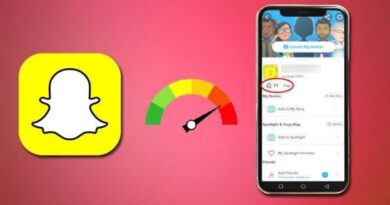Tips to Reverse Search a Video: 4 Best Reserve Video Search Engines
Have you ever researched the origins of a video you saw online and found it to be either worthwhile or funny? Today, its history may be researched in greater depth than ever before. To track out the original creator of a video that has given you joy, all you have to do is utilize Google’s reverse image search. If you want to know where a picture or video originated from, you may use the handy “reverse search” function to do just that. Here’s the definitive manual on how to do a Google video reverse search. In such a case, read on!
Performing a Backwards Search on a Video

Commonly, you will use a search engine to look for a certain term or phrase until you come across a website or set of results that meet your needs. On the other hand, when you search for a result using reverse search, the search engine will really go through each page where your search items occur.
Google and other search engines analyze the colors and pixels in your video to locate identical or similar content on the web. The findings aren’t always spot-on, but they come in handy when you need to know whether a certain film is being shown for the first time, or how often it is being shown again.
The Reason Why You Should Do a Backwards Video Search
RVS stands for “Reverse Video Search,” and the concept of reverse video search is revolutionary not just in the realm of video editing but across all media. Mastering reverse video search has various applications. The following are only a few of the benefits.
- If you’re a company owner, understanding how to use Google’s reverse search function on a video is a huge help when it comes to verifying the legitimacy of your customers.
- You don’t have to take seriously the allegations made by other users on social media. There are specialized search engines that are helpful all the way through.
- Knowing how to do a video reverse search is useful if you are an art connoisseur searching for a beautiful item to add to your collection online.
- In the same way that you can simply search the web for irrelevant information using a reverse video search, you can also do the opposite. Also, you may learn a great deal more about a topic of interest.
- If for some reason you come across a video that has nothing to do with a fake brand, you may do a reverse video search to track out its original creator.
- The strategies of how to reverse search a video on Google might be useful if you are looking for a celebrity but do not know their name.
Discovering how videos are really being used. Video creators may do a reverse video search to see how often their work has been embedded on websites. If you’d want to be credited for your video or have it taken down, you may do either of those things by sending a takedown request.
Useful for tracking down uncut versions of videos. Sites like Reddit and Imgur, which facilitate the sharing of files, may impose restrictions on the maximum file size shown. If you want to see a video in its entirety, you may do a reverse video search.
The Challenges of Teaching Yourself to Search Videos Backwards
Just like any other notion, there are good and bad aspects to using reverse video search. I’ll go through a few of them below.
- It will take a long time to get this procedure up and running. Nobody understands what to make of the concept of the reverse video now.
- It is simple to control the search results. A modification of even one pixel in the video or other results will not be seen.
- The original video’s frames must be indexed by each search engine. This takes a long time and may not even get the desired outcomes with today’s technology.
- Every day, many new videos are added to the internet, all of which will eventually need an index. It’s not easy to create an index for all those videos.
- This can be done in theory, but it would take an enormous amount of time and energy. The current situation prevents this procedure from being simple.
- These kinds of searches are challenging with today’s processing capability. Using quantum computing, this concept can be realized, but it will take another 5-10 years.
Here, we’ll walk you through the process of doing a Google video reverse search from your iOS or Android device.
Method 1: Using an Android Device
On Android, you may use the Google Lens app to do a reverse video search. If you own an Android smartphone and want to know how to do a reverse video search, read on.
- Start up the Google Play store.
- Download the Google lens by searching for it in the search box.
- Launch the program of your choice by clicking the picture icon to the left of the camera button.
- Select the picture from your computer’s file browser. Results with photos and videos that are relevant to your search will now be shown.
Method 2: Apple iOS
The best way to do a Google video reverse search on an iOS device. Do the same by following the instructions below.
- To use Google on your iOS device, you’ll need to get the app from the App Store.
- Launch the Google program you just added.
- Then, within the Google search box, click the camera icon.
- One may now choose between snapping a photo and searching the internet for an existing one. The choice of searching a specified area of a picture or the whole image is also available. The outcomes are down below.
Google’s Backwards Video Search Guide
Google’s resources are revolutionary. You name anything, and chances are good that Google has a tool to help with it. Nowadays, it’s simple to do a backward search on Google. When using a PC using either Google Chrome or Mozilla Firefox, you may do a reverse search. Using a search engine like Chrome on Android or Safari on iOS, you may do a reverse search. You can also do a backward search using the Google Lens app, but it isn’t necessary if you don’t utilize any of the services.
Approach 1. Using Google Images
Google Images is the most widely used reverse image search engine in the world.

Google Images makes it simple to track out an image’s original location and uncover contextual details. While Google does not now allow you to run a reverse search on a video, you can still use a screenshot to learn a lot about it.
Here are the measures for doing a Google video search in reverse.
- You may get details about any topic by choosing the relevant video.
- Start the video and capture a still.
- In Chrome’s address box, enter “Google Images.”
- Start by selecting the camera icon on Google Images.
- To add a picture, choose the appropriate button.
- Next, choose to Pick a File.
- Select the image you want to use next.
- You may expect a backward search to be performed. When the search results come up, you may choose the most relevant article or video.
- A backward search will be performed. When the search results come up, you may choose the most relevant article or video by clicking on the name of the actor or actress, the title of the video or movie, or the season and episode number. What happens next may be seen in the table below.
Approach 2: Visual Search on an Android Device
Follow these instructions to implementing how to make a reverse video search on Google utilizing the Visual Search function on your Android smartphone.
- Launch Chrome on your Android device.
- To use Google Lens, choose the icon.
Independent Third-Party Instruments
A reverse video search is not limited to the above-mentioned search engines. You can also utilize external programs if you need to. To identify even more occurrences of your films, these external programs may additionally scan the databases of search engines.
1. Berify
Some of Berify’s features are listed below.
- Berify is an image and video search engine that works in reverse.
- Image registration is an added function. They’ll send you a notification as soon as your clip is uploaded.
- You may use it to track down missing media files. Berify provides results from Google, Bing, Yandex, and other search engines by using advanced picture-matching algorithms. Discovering who is unauthorizedly re-using your work is a further benefit.
- Google, Bing, and other search engines allow you to search through up to 6,000 photographs at once. Since the search is more comprehensive than Google, it also takes more time.
- If you don’t know the URL of the picture you want to search for, you may upload it instead to get started.
To learn how to do a video search in reverse using Berify, just follow the instructions below.
- Simply type “berify” into your browser’s search bar to get the Berify homepage.
- Please click the “SIGN UP FOR FREE” button below to create your free account.
- Select the no-cost option and complete the registration process.
- Use the search box to find certain pictures.
- It will prompt you to enter a web address from your gadget.
- To find a certain photo, click on it.
- At this point, verify and analyze the photo and provide the findings.
- Berify then returns with further search engine results and information on where the photographs have been utilized.
2. Shutterstock

Another video reverse search engine is Shutterstock. About 200 million clips can be found on Shutterstock, making it one of the biggest stock picture websites. Recently, it included a facility for searching videos by their titles. Your reverse video search should begin with Shutterstock since its database has more than 1 billion photos and films.
- Use Google to find the Shutterstock website and click through to it.
- Choose a picture to search for by clicking on the corresponding Search for images button.
- Select “image search” and then “upload a screenshot.”
3. Yandex Picture Search
Besides being a well-known search engine in Russia, Yandex also offers a variety of online services, including one dedicated to images. Yandex has its own search engine and even allows users to do a reverse picture or video search. How to make a video reverse search is shown below.
- Google picture search Enter your query into the browser’s search box and go to the homepage.
- An equivalent of the above search bar should now appear.
- An image icon will appear in the search field.
- Choose the photo you want details on. Having received your screenshot, Yandex will immediately provide you with relevant information.
4. TinEye

TinEye is a reverse image search engine, much like Berify. TinEye is risk-free to use since your search photos are never stored. TinEye Search is a secure, private, and constantly improving alternative to traditional search engines. TinEye can do a search for an image and provide results by using image recognition technology. TinEye uses machine learning and neural networks for pattern recognition to locate photos throughout the web. When one of your movies or photographs is embedded on a website, TinEye’s API notifies you.
Here are the measures you take to do a TinEye backward search.
- Simply type “TinEye” into your browser’s search bar to see the TinEye homepage.
- You may either choose to upload the picture directly or enter the image’s URL in the search field. The search bar now supports drag-and-drop picture uploads.
- What follows is the outcome of TinEye‘s search for the data associated with your picture.
Even if reverse video search engines are not yet commonplace, this will change soon. In the end, we hope you’ll be able to reverse search a video on your device using the information provided here. Keep coming back to our site for additional helpful hints and share your thoughts with us in the space provided.



